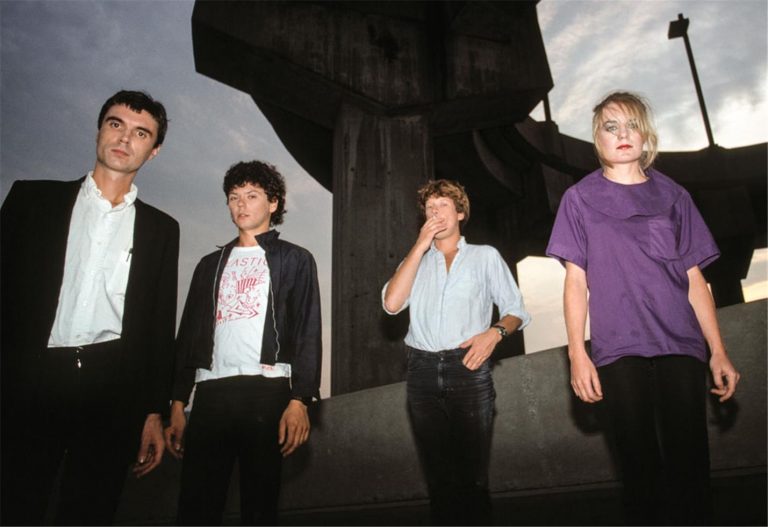Today marks 40 years since October 8, 1980, the release date of Talking Heads‘ era-defining fourth album Remain in Light. It’s hard to believe that an album this urgent, this influential, this ingrained in music culture could be four decades in the rearview. Hell, it’s older than everyone who contributes to this website – but the fact that we all worship it just stands as a testament to its epochal brilliance. We’re reminded of it almost daily by the countless contemporary artists in divergent genres who count it among their guiding stars.
But, as we probably all know, it almost never happened. Following 1979’s Fear of Music, Talking Heads’ enigmatic frontman David Byrne thought he’d had enough of being in a band and would go off and do his own thing. It was only via some sly manoeuvring of egos by the band’s rhythm-section and married partnership, Tina Weymouth and Chris Frantz, that they managed to get Byrne to come over to their loft where they were jamming with Jerry Harrison while Brian Eno watched on. The free-form jams were sounding so good, Byrne couldn’t help but get involved.
After a week of working out ideas, the band and Eno shifted down to their favourite studio, Compass Point in the Bahamas. You’d think that working on inspired music in such a scenic location would’ve calmed relationships between the band, but tension only increased as Eno and Byrne continued to work on music behind the others’ backs. Original engineer Rhett Davies even quit because they kept erasing Weymouth’s bass parts – thankfully she snuck them back on again later at the behest of replacement engineer Dave Jerden.
Things did not loosen up on return to the USA for the final touches. Eno and Byrne deemed everyone else surplus to requirements in the control studio, so Weymouth and Frantz went to work on the album cover. Through contacts at MIT, the pair worked with an outfit called the Architecture Machine Group to create the iconic muddied imagery of the front and the ominous bombers on the back (high tech for the time!). They left the lettering to a desinger called Tibor Kalman, who essentially just turned the two As in TALKING HEADS upside-down, but took credit for designing the whole lot.
Credit was in short supply in the songwriting too. In what sounds like an extraordinarily bad idea, following completion of Remain in Light, the four members and Eno met, and each secretly wrote down what they thought the songwriting splits for each track should be. Reportedly, when Eno saw what the others had written, he stormed out saying “I have never been so disrespected in my entire life!” In fact, Eno had wanted the album to be credited to ‘Talking Heads and Brian Eno’ – but was dissuaded from the idea when it was put to him that, if his name did appear on the cover, he would have to go on tour with the band in support of it.
Ultimately, it was decided that all of the songs should be credited, in alphabetical order, to ‘David Byrne, Brian Eno, Chris Frantz, Jerry Harrison and Tina Weymouth’. It was only when the final product arrived that the rest of the band realised Byrne had gone behind their backs, yet again, and changed the credits to ‘All songs by David Byrne, Brian Eno, Talking Heads’ except “The Overload” and “Houses in Motion”, where Jerry Harrison did get a mention by name.
Honestly, it’s amazing they created an album at all – and an undisputed classic at that – and even went on to have some of their defining mainstream moments in the years that followed.
While it’s fascinating, and undeniably amusing, to look back on the inter-band fractures (surely the main reason why they’ve never reformed), those arguments are also now decades in the past. What really remains and really matters is the music, and that’s what we’re here to celebrate.
A different member of the BPM team has shared their feelings about each the eight tracks on Remain in Light, reflecting on their innovative musicality and why they still stand up in 2020.


